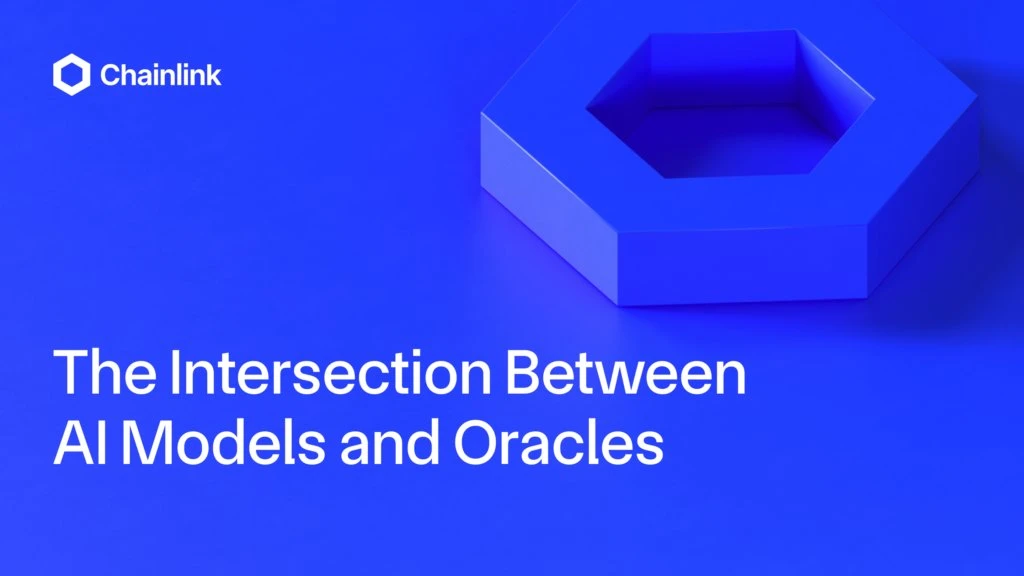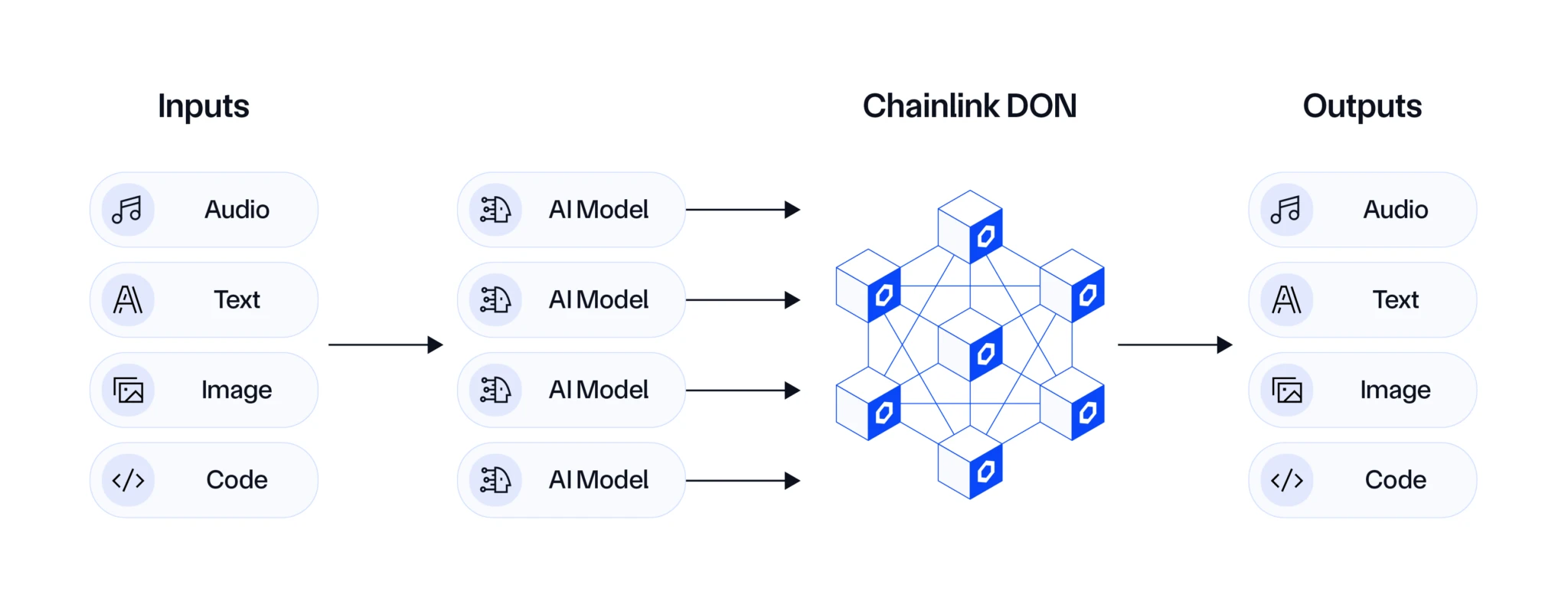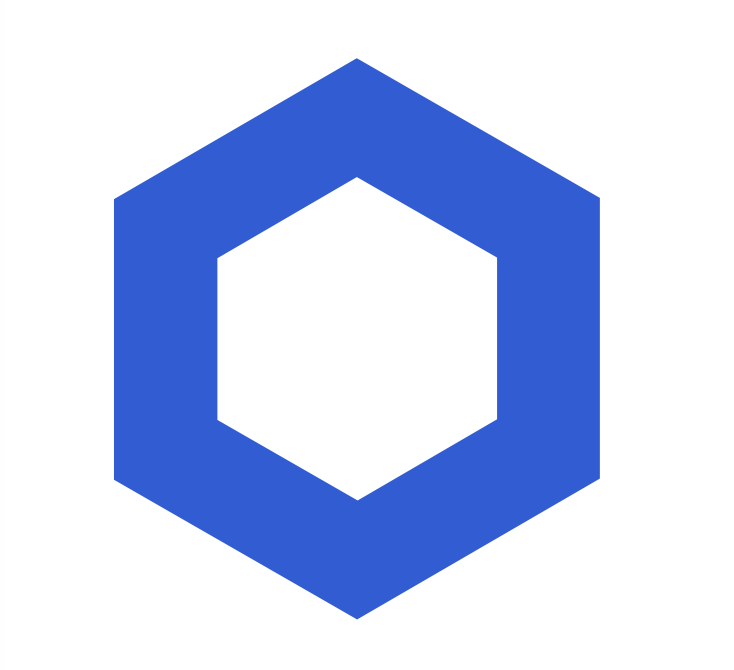
Oracle networks are an infrastructure that connects blockchains to external systems, allowing smart contracts to execute instructions based on external inputs and outputs. Oracle networks are extremely versatile in the application scenarios of smart contracts because they can reliably transmit information obtained through decentralized consensus based on any input or output.
With the emergence of generative AI, large language models (LLMs), and AI agents capable of performing tasks on behalf of users, the role of oracle networks can be expanded through their application in AI-driven technologies.
As a fact machine that provides security and cryptographic facts , Chainlink continues to evolve to provide assurance for a variety of smart contract use cases. Its advancements provide new opportunities to improve the reliability of AI responses and unlock new smart contract use cases at the convergence of blockchain and AI .
This blog explores two key ways oracle networks interact with AI models.
Accessing a single AI model
Chainlink’s initial use case is to aggregate multiple market data sources and deliver verified, aggregated, high-quality pricing information to smart contracts in the DeFi ecosystem. This safety-first design has created enough reliability to enable DeFi to grow from a niche ecosystem with less than $100 million to an on-chain economy of more than $200 billion .
As a universal blockchain connectivity standard, Chainlink can connect smart contracts to AI by enabling access to a single AI model as a single source of smart contract input. In order for this feature to work effectively, the specific AI model used must be considered a highly reliable and accurate source of information.
If an AI model is deemed reliable enough to control value, Chainlink can enable it to interact with smart contracts. In addition, using Chainlink CCIP can enable AI models to interact with multiple smart contracts on multiple chains simultaneously on behalf of users.
If a single AI model is able to provide useful responses, but there is a risk that it may become delusional and give the wrong answer or take the wrong action, an oracle network can be used to introduce additional reliability and redundancy. This is where the second potential use case covered in this article comes into play.
Aggregate results from multiple AI models
The Chainlink oracle network can be used to aggregate the results of multiple AI models. This involves connecting them to multiple individual AI models and aggregating their responses within a decentralized oracle network (Decentralized Oracle Network, DON), allowing them to reach a consensus to determine a certain threshold, thereby improving the reliability of the response.
In such an architecture, the end user does not get output from a single AI model, but from the entire universe of AI models.

Oracle networks can aggregate responses from multiple AI models to improve reliability
In some cases, getting answers from a wider range of AI models may be preferable as this can produce more reliable and accurate responses, or reduce the risk of illusions, making oracle-based AI models the preferred way for smart contracts to interact with certain information.
The challenge of aggregating inputs from multiple AI models can range from simple to unsolved, depending on the output of the generative task, and Chainlink can generate solutions to common use cases and continue to push the cutting edge to solve complex problems.
Applying Fact Machines to AI Use Cases
Using oracle networks to connect AI models to smart contracts has similarities to the work already being done within the blockchain ecosystem with Chainlink. Chainlink Price Feeds utilizes a multi-layered decentralized aggregation system to reduce single points of failure and ensure that each oracle report reflects the true market price of an asset.
This enables Chainlink to provide over $12 trillion in transaction value for other types of data such as market data. If AI models are viewed as simply a source of inputs and data, then the Chainlink oracle network applies directly to them as another type of input that smart contracts can leverage, thus supporting end-to-end automated economic processes.
Connecting AI models to smart contracts can open up a wide range of new use cases, covering security, supply chain management, authenticity verification, data storage, and more. If you want to explore more use cases for the convergence of AI and blockchain, read AI Use Cases in Blockchain .
Disclaimer: This article is for informational purposes only and contains statements about the future. Although we believe these statements are based on reasonable assumptions, there can be no assurance that actual results will not differ materially from these statements. Interactions with blockchain networks are subject to risks, including those arising from user input errors. All statements are valid only as of the date of initial publication. These statements may not reflect future developments and we may not update this article due to user feedback or subsequent events.










